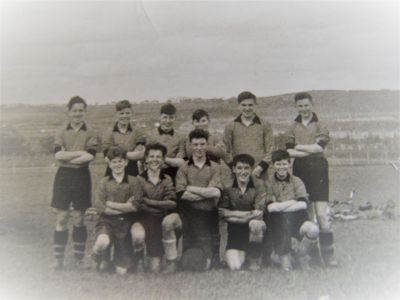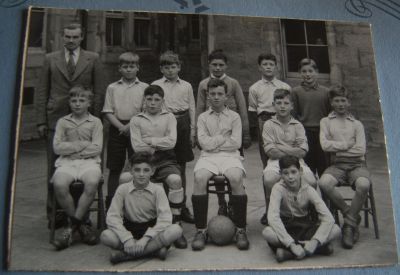Previous contributions from Rob Boag to these pages have seen the Canadian resident pen solo.
However, in his latest offering, the first line was: “This is a collaboration from Doug Bruce and myself.”
He then joked: “In our youth, Doug Bruce and I had the same artistic traits as Michelangelo – the three of us painted ceilings!”
He continued: “Over the years, Doug and I have kept in sporadic touch, sharing family stories, updates of former work colleagues, and plumbing the depths of nostalgia on growing up in the post-World War 2 Dundee street football environment.
“In 2008, a BwB article and photo of the 1959 Lawside Rangers team caught my attention.
“I instantly recognised the goalkeeper, as the lad’s features told me he was a Mulvey.
“The Mulvey family were great friends of mine when they lived on Benvie Road. And Jim, the goalie in the photo, was the nephew of my pal Stan Mulvey.”
The article and photo also caught the attention of Doug Bruce, but for a more personal reason.
Rob continued: “Doug cut out the photo with the intent to write and provide further information to BwB on the inception of Lawside Rangers.
“However, Doug never got around to writing you and, when he mentioned it recently, I suggested a collaboration on the history of Lawside Rangers and a look back at schoolboy players and football equipment from that generation.
“Doug ran around with a group of young lads who came from the Hill Street area of the city and kicked a ball around on the east side of the Law Hill.
“In 1953, one of the lads, George Mackay organised the boys, suggested a team be formed and called it Lawside Rangers.
“Down in England in the 1950s decade, Wolves, captained by the legendary Billy Wright, were the powerhouse team that caught the admiration of football fans.
“Because of this, we think was the reason George MacKay selected Wolves colours for Lawside Rangers.
“Doug and I also shared memories of football equipment at that time, much of it was handed down.
“Boots that fitted perfectly after four pair of socks were pulled on, also had nails from studs that pushed through worn soles, and protruding nails from leather bars to replace studs.
“And there was also those hand-me-down beat-up cane covered shinguards that caused more agro and irritation than a kick to the player’s shins.
“Doug recalls the assorted team kit from the Hill Street 1950 school football team.
Rob continued: “The great front three of the Hill Street 1950s team was centre-forward Doug Bruce, with his two inside men being David Cook on the left and Jimmy Manzies on the right.
“What is remarkable from those threadbare 1950s was the emergence of outstanding Dundee sports talent that matured in the 1960s – and what a memorable legacy they left!
“ I would say the 1950s lads were way more talented than future generations that turned out in Nike, Umbro and Adidas gear.”
 The original Lawside Rangers, taken in 1953 at Graham Street ground. Bert Small, John Darcy, George Mackay, Derek Moffat, Bobby Bell. Front row – Billy Melville, Doug Bruce, Doug Daily, Bob Anderson, Unknown
The original Lawside Rangers, taken in 1953 at Graham Street ground. Bert Small, John Darcy, George Mackay, Derek Moffat, Bobby Bell. Front row – Billy Melville, Doug Bruce, Doug Daily, Bob Anderson, Unknown
